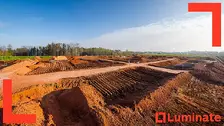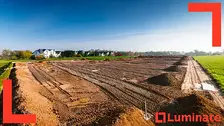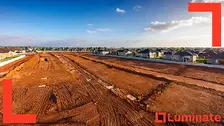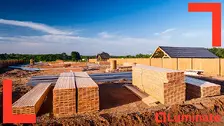How to Pick a Development Site in New Zealand: A Strategic Guide to Site Selection
 By
Trent Bradley
·
10 minute read
By
Trent Bradley
·
10 minute read

Selecting the right development site represents one of the most critical decisions in property development, fundamentally determining project feasibility, profitability, and success prospects. In New Zealand's complex regulatory and market environment, effective site selection requires systematic analysis, thorough due diligence, and strategic thinking that extends beyond basic location considerations. This comprehensive guide provides practical frameworks for identifying and evaluating development sites that deliver optimal outcomes.
Table of Contents
- Understanding Site Selection Fundamentals
- Location Analysis and Market Fundamentals
- Site-Specific Evaluation Criteria
- Zoning and Regulatory Analysis
- Infrastructure and Services Assessment
- Financial Analysis and Feasibility
- Due Diligence Process
- Acquisition Strategy and Negotiation
- Common Site Selection Mistakes
- Regional Variations in Site Selection
- Technology and Site Analysis
- Working with Development Finance Providers
- Frequently Asked Questions
Key Takeaways
- Site selection fundamentally determines development feasibility and profitability—successful selection requires systematic analysis of location hierarchy, market demand, development capacity, infrastructure integration, and regulatory environment rather than basic location factors alone
- Comprehensive location analysis examines regional growth patterns, urban development trends, demographic shifts, employment centres, and competitive supply to identify areas with strong development fundamentals and sustained demand prospects
- Site-specific evaluation must assess size and configuration, topography, access arrangements, services capacity, environmental constraints, and neighbourhood integration to determine actual development feasibility and cost implications
- Financial analysis should compare sites objectively through land value assessment, development cost estimation with adequate contingencies, revenue potential modeling, cash flow projections, and sensitivity testing under adverse scenarios
- Due diligence process requires legal title review, technical investigations (surveys, geotechnical, contamination), planning assessments, market validation, and comprehensive risk identification before making acquisition commitments
- Common mistakes include overpaying for theoretical development potential, inadequate due diligence, ignoring infrastructure constraints, regulatory overconfidence, and selecting sites that misalign with target market preferences and price expectations
Understanding Site Selection Fundamentals
Successful site selection begins with understanding the fundamental factors that influence development potential and long-term project success in New Zealand's unique market environment.
Location Hierarchy Analysis: Analyse locations through hierarchical thinking including regional growth patterns, urban development trends, and neighbourhood characteristics. Sites in growth corridors with infrastructure investment typically offer superior long-term prospects compared to declining or static areas.
Market Demand Assessment: Understand target market demand patterns including demographic trends, employment centres, lifestyle preferences, and affordability constraints. Sites that align with strong demand fundamentals provide more predictable sales outcomes and pricing support.
Development Capacity Evaluation: Assess actual development capacity under current zoning, considering practical constraints including topography, access, services, and regulatory requirements. Theoretical zoning capacity often differs significantly from achievable development density.
Infrastructure Integration: Consider existing infrastructure capacity and planned improvements including transport networks, utilities, schools, and healthcare facilities. Sites with adequate infrastructure or planned improvements avoid costly upgrade requirements and development delays.
Regulatory Environment: Understand local regulatory environment including council attitudes toward development, processing efficiency, and policy directions. Councils supportive of development typically provide faster approvals and fewer obstacles compared to growth-resistant jurisdictions.
Location Analysis and Market Fundamentals
Comprehensive location analysis provides the foundation for effective site selection by identifying areas with strong development fundamentals and growth prospects.
Regional Growth Patterns: Research regional growth trends including population increases, employment growth, and economic development initiatives. Focus on regions benefiting from infrastructure investment, industry development, or lifestyle migration trends.
Urban Development Trends: Understand urban development patterns including sprawl directions, intensification areas, and transport-oriented development zones. Sites aligned with planned urban growth typically offer superior development prospects and regulatory support.
Demographic Analysis: Analyse demographic trends including age profiles, household formation, income levels, and lifestyle preferences in target locations. Strong demographic fundamentals support sustained demand and price growth over development timelines.
Employment and Economic Factors: Consider employment centres, economic development initiatives, and industry trends that influence housing and commercial property demand. Sites accessible to major employment centres typically command premium pricing and experience stronger demand.
Lifestyle and Amenity Factors: Evaluate lifestyle amenities including recreational facilities, natural environments, cultural offerings, and community infrastructure. Quality amenities enhance market appeal and support premium positioning strategies.
Competition and Supply Analysis: Assess existing and planned development supply including competitor projects, land availability, and development pipeline. Understanding competitive dynamics helps identify market gaps and optimal positioning strategies.
Site-Specific Evaluation Criteria
Moving beyond location fundamentals, detailed site-specific evaluation identifies physical and regulatory characteristics that determine development feasibility and cost.
Site Size and Configuration: Evaluate whether site size and shape enable efficient development layout while meeting regulatory requirements including setbacks, access, and landscaping provisions. Irregular or constrained sites often reduce development efficiency and increase costs.
Topography and Physical Characteristics: Assess slope, drainage, soil conditions, and vegetation that influence development costs and design flexibility. Challenging topography increases earthworks costs but may provide design opportunities for premium positioning.
Access and Connectivity: Evaluate existing access arrangements and potential improvements including road frontage, intersection capacity, and transport connections. Poor access creates ongoing constraints and may require expensive upgrades.
Services and Infrastructure: Confirm availability and capacity of essential services including water, wastewater, electricity, telecommunications, and gas. Inadequate infrastructure capacity may require costly upgrades or prevent desired development density.
Environmental Constraints: Identify environmental constraints including waterways, wetlands, native vegetation, heritage sites, and contamination issues. Environmental constraints may prevent development or require expensive mitigation measures.
Neighbourhood Character: Consider how development will integrate with existing neighbourhood character and whether proposed development scale and type aligns with community expectations and regulatory frameworks.
Zoning and Regulatory Analysis
Understanding regulatory frameworks and development controls helps identify sites with optimal development potential while avoiding regulatory obstacles and delays.
Zoning Provisions: Analyse current zoning including permitted activities, density controls, height limits, and setback requirements. Compare zoning potential with market demand to identify optimal development approaches.
District Plan Requirements: Review district plan provisions including design controls, infrastructure requirements, assessment criteria, and consent pathways. Understanding regulatory requirements helps estimate consent costs and timeline risks.
Future Planning Directions: Research council strategic planning including structure plans, growth strategies, and policy development that may influence future zoning or development opportunities. Anticipated zoning changes may create future development potential.
Heritage and Special Character: Identify heritage listings, special character areas, or cultural protection measures that may constrain development options. Heritage constraints often limit development scale but may provide unique positioning opportunities.
Natural Hazard Considerations: Assess natural hazard risks including flooding, coastal erosion, earthquake, or geotechnical hazards that may influence development feasibility and insurance costs.
Subdivision History: Research site subdivision history and any previous consent applications to understand development precedents and identify potential issues or opportunities.
Infrastructure and Services Assessment
Comprehensive infrastructure analysis identifies development enablers and constraints while estimating upgrade costs and timeline implications.
Water Supply Adequacy: Confirm water supply capacity including pressure, flow rates, and connection costs. Inadequate water supply may require expensive upgrades or limit development density.
Wastewater Treatment: Assess wastewater disposal options including council reticulation, private systems, or upgrade requirements. Wastewater constraints often represent major development obstacles in growth areas.
Stormwater Management: Evaluate stormwater disposal requirements including on-site management, council systems, or environmental protection measures. Modern stormwater requirements can significantly impact site layout and costs.
Electrical Supply: Confirm electrical supply capacity and connection costs including transformer upgrades or network extensions. Electrical constraints may limit development timing or require expensive upgrades.
Telecommunications: Assess telecommunications infrastructure including fibre availability, mobile coverage, and connection requirements. Modern developments require high-quality telecommunications for market appeal.
Transport Accessibility: Evaluate transport accessibility including public transport, walking and cycling connections, and road network capacity. Transport accessibility significantly influences market appeal and pricing potential.
Community Infrastructure: Consider proximity to schools, healthcare, retail, and recreational facilities that influence market appeal and resident convenience.
Financial Analysis and Feasibility
Systematic financial analysis helps compare site options objectively while identifying optimal acquisition strategies and development approaches.
Land Value Assessment: Determine fair market value through comparative analysis, considering both current use value and development potential. Avoid overpaying for sites based on optimistic development assumptions.
Development Cost Estimation: Estimate comprehensive development costs including site preparation, infrastructure, construction, professional fees, and regulatory costs. Include adequate contingencies for unforeseen expenses.
Revenue Potential Analysis: Analyse potential revenue based on market research, comparable sales, and target market analysis. Consider multiple development scenarios to test revenue sensitivity.
Cash Flow Modelling: Develop cash flow models showing investment timing, funding requirements, and return generation. Consider holding costs, finance charges, and market timing factors.
Risk-Adjusted Returns: Calculate risk-adjusted returns considering development risks, market volatility, and alternative investment opportunities. Higher-risk sites require higher return potential to justify investment.
Sensitivity Analysis: Test financial viability under various scenarios including cost increases, revenue reductions, and timeline extensions. Robust developments remain viable under reasonable adverse scenarios.
Due Diligence Process
Comprehensive due diligence confirms site suitability and identifies all material issues before making acquisition commitments.
Legal Due Diligence: Review title documents, easements, covenants, and legal restrictions that may influence development potential. Engage legal professionals for complex title structures or restriction interpretation.
Technical Investigations: Commission appropriate technical reports including surveys, geotechnical assessment, contamination studies, and infrastructure assessments. Technical investigations often reveal issues not apparent from initial site inspection.
Planning Due Diligence: Engage planning professionals to assess consent feasibility, processing risks, and regulatory compliance requirements. Planning due diligence helps validate development assumptions and identify potential obstacles.
Market Validation: Validate market assumptions through agent consultation, buyer research, and comparable analysis. Market validation helps confirm demand assumptions and optimal product positioning.
Financial Verification: Verify all financial assumptions including costs, revenues, and financing availability. Financial verification prevents acquisition of sites that cannot deliver adequate returns.
Risk Assessment: Identify all development risks and assess mitigation strategies and costs. Comprehensive risk assessment informs acquisition decision-making and project structuring.
Acquisition Strategy and Negotiation
Effective acquisition strategies balance site security with risk management while achieving optimal acquisition terms.
Market Timing Considerations: Consider market timing factors including development cycles, interest rates, and competitive activity. Acquisition timing significantly influences development success and return potential.
Conditional Purchase Strategies: Structure purchases with appropriate conditions precedent including planning approvals, finance confirmation, and due diligence satisfaction. Conditional purchases provide development security while managing acquisition risk.
Option Agreements: Consider option agreements for sites requiring extended planning or feasibility analysis. Options provide development control while limiting initial capital commitment.
Joint Venture Opportunities: Evaluate joint venture opportunities with landowners, particularly for large or complex sites. Joint ventures can provide site access while sharing development risks and capital requirements.
Negotiation Strategies: Develop negotiation strategies that achieve fair pricing while maintaining positive vendor relationships. Consider vendor circumstances, timing pressures, and alternative opportunities.
Settlement Timing: Negotiate settlement timing that aligns with development planning and financing arrangements. Optimal settlement timing balances site security with capital efficiency.
Common Site Selection Mistakes
Understanding typical site selection mistakes helps avoid costly errors and improve acquisition decision-making.
Overpaying for Development Potential: Avoid paying excessive premiums for development potential that may not be achievable under regulatory or market constraints. Base acquisition prices on conservative development assumptions.
Inadequate Due Diligence: Rushing due diligence or failing to investigate critical issues often leads to unexpected costs and delays. Invest in comprehensive due diligence for all potential acquisitions.
Ignoring Infrastructure Constraints: Failing to assess infrastructure capacity and upgrade requirements can make developments unviable. Confirm infrastructure adequacy before acquisition commitment.
Regulatory Overconfidence: Assuming consent approval without proper planning assessment often leads to disappointment and delays. Validate consent feasibility through professional planning advice.
Market Misalignment: Selecting sites that don't align with target market preferences or price expectations reduces sales success and profitability. Ensure site characteristics match target market requirements.
Poor Location Analysis: Focusing on site-specific factors while ignoring broader location fundamentals often leads to poor long-term performance. Consider both site and location factors in acquisition decisions.
Regional Variations in Site Selection
Site selection strategies vary across New Zealand's diverse regions, each presenting unique opportunities, challenges, and market characteristics.
Auckland Site Selection: New Zealand's largest city offers diverse opportunities but also presents complex regulatory requirements, high land costs, and intensive competition. Focus on transport accessibility, zoning flexibility, and infrastructure capacity.
Wellington Region Selection: The capital region's geographic constraints create premium opportunities while requiring careful assessment of earthquake risk, infrastructure limitations, and heritage constraints.
Christchurch Opportunities: Post-earthquake reconstruction continues creating development opportunities while requiring assessment of ground conditions, insurance availability, and infrastructure capacity.
Provincial Centre Selection: Smaller cities often offer more affordable acquisition opportunities but require careful assessment of demand sustainability and absorption rates.
Rural and Lifestyle Markets: Rural development sites require assessment of services availability, consent feasibility, and target market accessibility to urban centres.
Technology and Site Analysis
Modern technology provides powerful tools for site analysis and comparison that improve selection accuracy while reducing investigation costs.
Geographic Information Systems: GIS analysis enables comprehensive site assessment including zoning, infrastructure, hazards, and development constraints. GIS technology improves decision-making while reducing investigation time.
Online Property Databases: Digital property databases provide extensive information including sales history, zoning, valuations, and development potential. Online databases enable efficient screening of multiple opportunities.
Aerial and Satellite Imagery: High-resolution imagery enables detailed site assessment including access, topography, vegetation, and neighbourhood context. Imagery analysis often reveals issues not apparent from ground inspection.
Market Analysis Tools: Digital market analysis tools provide demographic data, sales information, and development activity that supports location analysis and market validation.
Planning and Regulatory Databases: Online planning databases provide access to district plans, consent information, and regulatory requirements that support site evaluation.
Working with Development Finance Providers
Development finance providers offer valuable expertise in site selection through their extensive experience across diverse development projects and market conditions.
At Luminate Finance, we understand that site selection represents the foundation of development success and work closely with developers to evaluate acquisition opportunities and development potential.
Our extensive experience across New Zealand's development markets provides insights into site selection criteria, regional variations, and acquisition strategies that optimise development success prospects.
We often review potential sites during feasibility discussions, providing feedback on development potential, acquisition strategies, and financing implications. Our involvement helps developers make informed acquisition decisions while ensuring sites align with financing requirements.
Our comprehensive approach includes assessment of development feasibility, market positioning, and risk factors that influence both site suitability and financing availability. We understand that quality site selection significantly impacts project success and investment security.
Through our involvement in numerous development projects, we've developed deep understanding of site characteristics that contribute to successful developments across different regions, development types, and market conditions.
Our network of professional relationships including planners, engineers, and market experts often provides additional insights and due diligence support for site evaluation and acquisition processes.
Frequently Asked Questions
What's the single most important factor when selecting a development site?
Location fundamentals trump all other factors—specifically regional growth patterns, employment accessibility, and infrastructure investment. A perfectly zoned site with ideal physical characteristics in a declining area will underperform a more constrained site in a high-growth corridor. Prioritise locations experiencing population increases, employment growth, and planned infrastructure investment over sites with favorable physical characteristics in static or declining regions. Location fundamentals you cannot change; physical and regulatory constraints can often be addressed through design, engineering, or planning approaches.
How do I determine if a site's asking price represents fair value?
Base acquisition prices on conservative development assumptions using residual land valuation methodology—work backward from realistic end sale values, subtract all development costs including contingencies (typically 10-15%), subtract required profit margin (minimum 20% of total development value), and the remainder represents maximum supportable land value. Compare this residual value against asking price and current use value. If asking price exceeds residual value based on conservative assumptions, negotiate lower or walk away. Avoid paying premiums for optimistic development scenarios that may not materialise under regulatory or market constraints.
What infrastructure constraints most commonly derail development projects?
Wastewater capacity represents the most common infrastructure constraint in New Zealand growth areas, often requiring expensive upgrades ($10,000-30,000+ per lot) or preventing desired development density entirely. Stormwater management increasingly constrains sites as councils implement stricter environmental requirements including detention systems and water quality treatment. Water supply pressure and electrical transformer capacity also frequently limit development, particularly in areas experiencing rapid growth. Always confirm infrastructure capacity with utility providers before acquisition—don't rely on zoning capacity alone.
Should I buy a site requiring resource consent or one with existing consent?
Sites with current resource consent eliminate consent risk and timeline uncertainty but command premium pricing reflecting reduced risk. Purchasing without consent allows lower acquisition cost but introduces consent risk, processing delays (typically 6-18 months), and potential conditions that reduce feasibility. Your decision depends on risk tolerance, timeline flexibility, and capital availability. Experienced developers often prefer acquiring sites requiring consent to access better pricing, while less experienced developers benefit from consent certainty despite paying premiums. Consider conditional purchase structures allowing due diligence and planning assessment before full commitment.
How important is neighbourhood character in site selection?
Neighbourhood character significantly influences both regulatory approval prospects and market appeal. Sites proposing development dramatically different from surrounding character typically face stronger community opposition, longer consent processing, and more restrictive consent conditions. However, transitioning neighbourhoods undergoing character change may support more intensive development if aligned with council growth strategies. Assess whether proposed development scale and type aligns with existing character or represents reasonable evolution consistent with planning policy. Sites enabling development harmonious with neighbourhood character generally achieve faster approvals and stronger market acceptance.
What due diligence can I skip to save costs on smaller developments?
Never skip title review, planning assessment, or basic site investigation regardless of project size—these investigations prevent fundamental feasibility issues that could render sites undevelopable. For smaller projects under 5 lots, you might reduce scope of geotechnical investigation (soil testing specific building locations rather than comprehensive site coverage) and conduct preliminary rather than detailed engineering assessments. However, contamination risk assessment remains essential for any site with industrial history regardless of size. Skipping due diligence on small projects to save $5,000-10,000 often results in discovering $50,000+ issues after acquisition when options are limited.
Ready to select your next development site with expert finance partner support? Contact Luminate Finance today to discuss how our comprehensive site evaluation expertise and development finance solutions can support your success from site acquisition through completed development.

Trent Bradley
Trent Bradley is a New Zealand financial advisor specializing in property-backed finance and investment consulting. With over 26 years of experience running his mortgage broking business, he has helped wholesale investors access high-yield property-backed loan opportunities. For the past 12 years, Trent has led Luminate Finance, a New Zealand finance company dedicated to connecting investors with secure property investment solutions.

































.png?//48413319.fs1.hubspotusercontent-ap1.net/hubfs/48413319/Featured%20images%20(14).png&width=247&height=126&name=Featured%20images%20(14).png)




